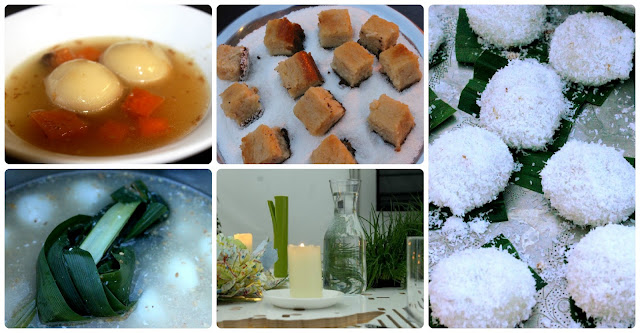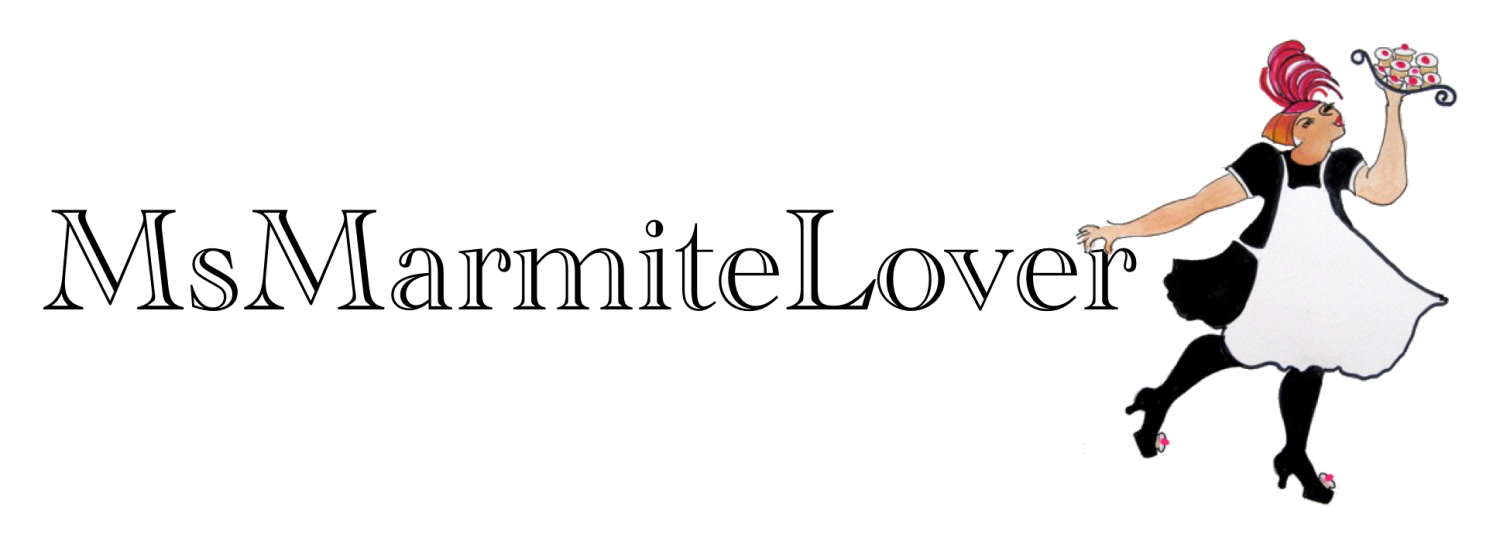 |
| Century eggs and tofu |
 |
| Goz Lee and Jason Ng of Plus Six Five supper club |
 |
| The bench mark and creator of the table, Alex Haw |
Goz Lee and his mate Jason Ng breezed into the kitchen in their surfer dude gear and casually cooked up a 5 course feast. Every day we in the kitchen are confronted with a new cuisine, a new style, a new attitude. Every day a new guest chef. Plus Six Five supper club (named after the phone prefix for Singapore) made it look effortless, a Usain Bolt attitude to cooking, you could say. They have time to look around before they cross the winning line.
Singaporean food is not well known and is often confused with Malaysian and Thai food. It is ethnically located at a crossroads: Chinese, Malay and Indian fused with a bit of British thrown in. This mix is known as Nyonya or Peranakan cuisine. Plus Six Five go further, their food is the kind of thing you eat in Singaporean homes rather than restaurants. It was unusual and challenging. Probably the weirdest food since Chris Massamba’s West African Raw Vegan. But it was also delicious and creative.
Here is the menu:
Chicken broth
The century eggs, once peeled, revealed a filling of black and green jelly, not colours you associate with tasty food. Traditionally these are fermented in either horse urine or little boy’s pee. Texture is extremely important in Chinese/Asian food, be it the gelatinous wobble of preserved eggs, the stickiness of the rice or the crunchy Cloud Ear mushrooms. Their cuisine mirrors the other-dimensional complexity of the Chinese language in which they have five different tones for each word, each importing another meaning. This food isn’t just about taste, they are working on other levels, balancing ying and yang, hot and cold, hard and soft, wet and dry, dark and light, masculine and feminine foods. Sticky is good, it ‘brings people together’, ’round food’ is equally appreciated. For instance tofu is Yin while mushrooms are Yang, therefore they are matched in the starter. Glutinous rice is Yang, while water is Yin, therefore the Tang Yuan balls are served in water/soup.
Pandan leaves had several uses: to plate up the petits fours, also in the soup for the rice ball dessert. Pandan or Screwpine leaves are employed extensively in Singaporean cookery, with a flavour close to vanilla. In Singapore, most people have them growing wild in their back garden. I got mine from Wing Yip. It’s so exciting to finally find out how some of the adventurous ingredients available in Asian supermarkets are actually used.
The Tapioca cake was a recipe from Goz’s grandmother, who taught him how to cook. Another word for Singaporean cuisine is ‘Nyonya’ or ‘grandma/auntie’. It’s interesting linguistically how this Malay word is so similar to the Italian ‘nona’ or the English ‘nan’. When it comes to the kitchen, grandmothers from all over the world, rule.
In other Global feast news, the bench has been almost entirely put on. It’s amazing what a difference this makes to the look. The Marianne trench has been built, climbing underneath the surface of the table, so close to the two-metre-high tessellated Himalayan range. The table now looks like the work of art that I imagined when I took on the challenge of the Global Feast. This table should not be broken up and auctioned. Some forward thinking gallery or public space should buy it. Pass the word.
 |
| Mains |
 |
| Desserts |
 |
| Night views, Tsing Tao beer, singer Radhika |
Global Feast. Tonight is the turn of Vietnamese supper club hostess Uyen Leluu and Thai Perm of The Skinny Bib.
Coming up: Caribbean night with Tan Rosie. This Saturday book here.
North American night with @scottcancook of @theunitedplatesofamerica supper club. Book here.




Leave a Reply